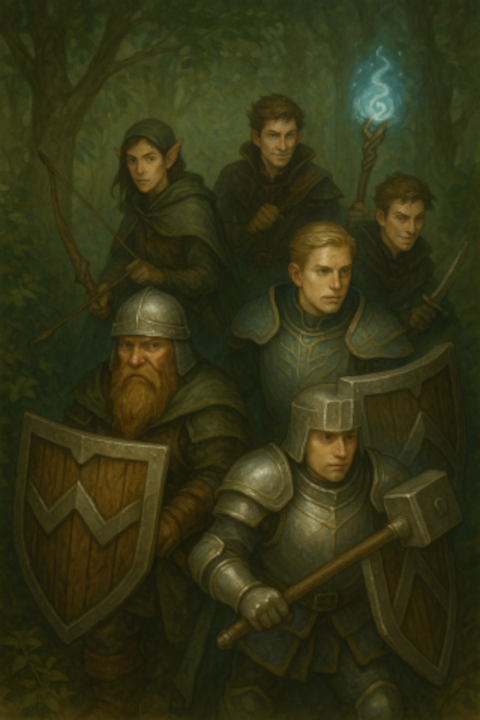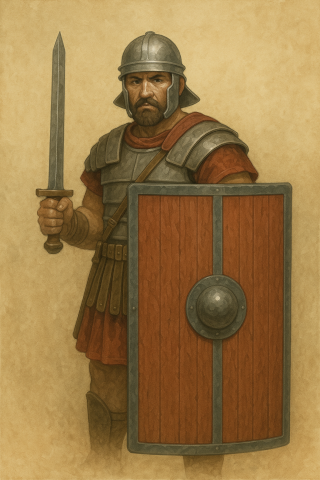Table of Contents

In D&D, the shield often plays second fiddle to swords, spells, and dramatic feats of heroism. Yet, for centuries in real-world combat, the humble shield was the cornerstone of battlefield survival—used not just as a passive layer of defense, but as a versatile, active tool for control, protection, and strategic dominance. In standard D&D 5E, shields provide a flat +2 bonus to Armor Class (AC), and their interaction with the rest of the rules is surprisingly limited. For a tool with such historical weight and tactical flexibility, this leaves many players and Games Masters craving more.
This article explores how shields are used in standard D&D gameplay and offers a selection of homebrew rules to make shields more engaging, dynamic, and representative of their true potential.
Shields in Standard D&D 5E
The default rules for shields in 5th Edition are straightforward:
- A shield is considered an item you can wield in one hand.
- While holding a shield, you gain a +2 bonus to AC.
- You can only benefit from one shield at a time.
- Most classes that allow shields are martial in nature (Fighter, Paladin, Cleric, etc.).
That’s it. There are no base rules for shield bashing, cover mechanics, or even wear and tear. They provide solid value for their weight, but they are often seen as dull compared to flashy weapons or magical items. In truth, shields could—and arguably should—play a larger tactical role, especially when used by characters focused on defense, crowd control, or formation fighting.
Homebrew Rules to Enhance Shield Mechanics
Below are several modular homebrew rules to enrich shield gameplay without unbalancing the system. Each can be implemented individually or as a bundle to promote more strategic choices around shield use.
1. Active Block (Reaction)
Rule: When you are targeted by an attack that you can see, you may use your reaction to raise your shield, increasing your AC by +3 instead of +2 until the start of your next turn. You must not have taken the Attack action on your last turn to use this ability.
Purpose: Encourages defensive playstyles and introduces a reactive choice. It also simulates bracing or hunkering down behind a shield.
2. Covering Ally (Reaction)
Rule: While wielding a shield, you may use your reaction to aid in the defence of anyone within 5ft on your shield side. This gives +1 AC to their defence. The attacker must be visible to you and also within 5 feet of you.
Purpose: Adds battlefield protection utility and encourages cooperative tactics in party play.
3. Shield Wear and Breakage
Rule: When a (non magical) shield is struck by a critical hit, or heavy siege weapon, the DM make DC (damage dealt) saving throw. On a failure, the shield is broken and no longer usable/nor grants any AC bonus. Magical shields cannot be broken in this way.
Sub Rule: On a critical hit by a magical attack, magic shields need to make the same saving throw or be broken.
Sub-sub Rule: Shields have a durability. Each failure reduces the durability of the shield by one (-1). When it gets to zero it breaks. A critical failure on the DC saving role reduces the durability by two (-2). Durability can be repaired by +1 per long rest. Broken shields cannot be repaired during a long rest but will need recrafting/blacksmith/artificer etc.
- Wooden buckler/Target Shield/Small shield: Durability +1
- Metal shield/Medium Shield/Large Shield/Simple Magic Shield (ie +1 AC) : Durability +2
- Tower shield/Significant magical artifact : Durability +3
- Legendary artifact : Durability +4
Purpose: Introduces risk and realism to prolonged shield usage, while adding an incentive for magical or reinforced shields.
4. Tower Shield Variant

Rule: A tower shield is a larger, heavier version of a regular shield. While wielded:
- Grants +3 to AC instead of +2. Provides +1 to AC for anyone within 5 feet on your shield side. They must be directly beside you and facing in the same direction.
- Requires Strength 15+ to use.
- Disadvantage on Stealth checks.
Purpose: Provides an interesting option for frontline defenders and simulates the Roman-style legion where shields would overlap multiple soldiers. A number of fighters/paladins could then make an effective shield-wall.
Class-Specific Shield Interactions (Optional)
Some classes can benefit even further from enhanced shield rules. Here are examples of small tweaks:
- Clerics (War Domain): May cast certain cantrips through their shield as if it were a divine focus.
- Paladins: Can expend a spell slot to infuse their shield, gaining temporary HP or causing it to glow, shedding light and repelling undead.
Conclusion: Shields as a Strategic Choice
Incorporating these homebrew shield rules adds layers of depth to combat that reward intelligent positioning and tactical defense. Whether you’re a GM looking to flesh out a battlefield or a player wanting your stalwart defender to shine, expanding shield functionality can transform them from passive bonuses into meaningful assets. Shields become not just a stat block filler—but a signature feature of a hero who stands between the darkness and their allies.
So next time you’re gearing up for a dungeon delve or fortress siege, don’t just reach for your greatsword. Grab your shield, plant your feet, and hold the line.
Links
There are some good sources out there for other ideas. One of the best is here which does provide some good extra rules – I specifically do like his sticky shield. Ryno also has an interesting document that was first published on D&D Beyond, but can be directly accessed here.
